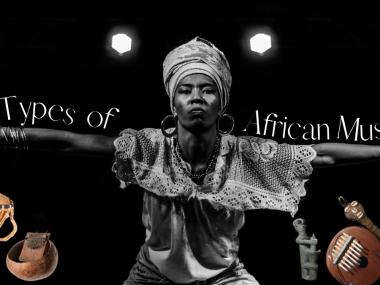Do you love creating and producing music? Or maybe you just enjoy kicking back and listening to some of your favorite tunes? Either way, this is one post you don’t want to miss!
Today, we’re diving deep into the world of one kind of music in particular: acoustic music. We want to understand what it is and how it’s different from other types of music. We’ll also talk about the various instruments used.
It’s true that with the help of all the available modern technologies of today, music has never sounded so good. Yet, nothing comes close to the pure, unfiltered sound of acoustic music.
Interested in finding out more? Let’s dive in.
What Is Acoustic Music?
Acoustic music refers to any type of music played only with unamplified instruments that produce sound via acoustic means. It’s authentic and completely natural.
It’s known to focus more on lyrics and melodies, rather than synthesizers or sound modifying tools. As a result, none of the basic elements of sound is lost or adjusted in any way.
What Does Acoustic Mean?
Acoustic is the branch of physics that has to do with our sense of hearing, also known as the science of sounds.
It’s mainly concerned with the production, transmission, and control of sounds. It can also refer to something that utilizes or operates sound waves.
In this article, we’re focusing mainly on acoustic music, which relies on instruments that utilize basic sound waves to make music, meaning they’re not electronically modified in any way.
The term ‘acoustic’ wasn’t used in music until electronic instruments came into being. It allowed musicians to differentiate between the two types.
Types of Acoustical Instruments

The oldest known instruments invented by humans are percussion and wind instruments. In fact, the oldest surviving flute is believed to have come from Central Europe. It’s dated to be more than 50,000 years old.
Then, when the Moors started occupying Spain in the 8th century, they brought along their oud. This string instrument was the launching pad for many others, such as the violin, cello, and more!
Several decades later, the guitar was born. After that, a wide variety of other modern-day instruments started to emerge.
Everything else we’re listening to now has only been around for less than a century, which is pretty young considering how long humans have been roaming the earth.
Let’s talk about each of the three main types of acoustic instruments.
Percussion
Percussion instruments are considered the oldest musical instruments in history. They include any type of instrument that can be struck, shook, or scraped. Players usually use their hands or a stick to generate sound waves and make music.
The percussion family is divided into two categories: tuned and untuned.
Tuned Percussion Instruments
Tuned percussion instruments are also referred to as pitched instruments. They’re capable of generating notes with identifiable pitches. They can also be used to create the rhythm or beat for other instruments to follow along.
A few examples of tuned percussions include:
- Xylophone
- Tubular bells
- Vibraphone
- Timpani
Untuned Percussion Instruments

Untuned percussion instruments are also called unpitched. They produce tones with no identifiable pitch.
Still, they’re considered to be the heartbeat of any musical piece. After all, they’re responsible for creating the rhythm that other instruments can follow.
Almost all untuned percussions are those that are struck or beaten with the hands or sticks, such as:
- Maracas
- Cymbals
- Tambourines
- Bass drums
String Instruments
String instruments all rely on tightly stretched strings. The remains of the oldest known string instrument were found in what’s now modern-day Iraq. They’re believed to be over 4,000 years old.
To make music, you have to set the strings in motion. When they move, they create sound energy.
There are nearly 300 different stringed instruments found worldwide. In any orchestra, the string section contains the largest instruments.
A distinctive feature of this family of instruments is that they work great with one another. They create similar frequencies that sound harmonious when played together.
Players usually pluck the strings with their fingers as with guitars. You can also use a bow to play the strings like with violins.
Did you know that pianos are considered to be part of the string family? The strings are hidden in the body of the piano. Then, by way of the keys, they vibrate and, as a result, we hear sound.
Here are few more examples:
- Cello
- Contrabass
- Harp
- Banjo
Wind Instruments

Wind instruments are typically shaped like a pipe or hollow tube. They make sounds via a stream of air supplied into this pipe or tube. Thus, wind energy is converted into sound energy.
This family of instruments is divided into two groups: brass and woodwind.
Brass
Brass refers to metal wind instruments. Brass instruments can be a band on their own or form a section of an orchestra.
Sound is produced when air vibrates inside the body of the instrument. Each player controls the pitch by changing the airflow.
They can also adjust the tension of their lips on the mouthpiece. They also use a valve or slide to alter the tone and pitch as they’re playing.
Examples of brass instruments include:
- Trumpet
- French horn
- Tuba
- Trombone
Woodwind
Woodwind instruments are made of, you guessed it! Wood. Nowadays, however, they can be made from a combination of wood, plastic, or metal.
The player blows air through the mouthpiece. This causes the air inside the instrument to vibrate, which generates sound.
To change the pitch, the player can open or close the holes that run along the body of the instrument.
Members of the woodwind family include:
- Clarinet
- Oboe
- Piccolo
- English horn
Can Acoustical Instruments Be Amplified?

When acoustic instruments are amplified in certain ways, it’s still considered acoustic music. In other words, if you plug an acoustic guitar into a microphone, it’s still considered acoustic.
Yet, if you play an electrical guitar with no microphone, it’s not acoustic. The reason? For an electric guitar to work, it has to be plugged into an electrical grid.
When the strings are plucked, their vibrations generate an electrical current. The current flows through the coils and magnets found inside the guitar.
Next, these vibrations are converted into electromagnetic energy. Finally, they run through an amplifier to produce sound.
Modern vs Acoustic Music
Now that we know what acoustic music is, let’s compare it with modern music.
In the contemporary sense of music, pop, rock, hip-hop, and jazz are all categorized as modern. They use electrical equipment to add certain elements that would otherwise be impossible.
Modern music first appeared in the early 1900s with the invention of electricity. This led to the development of circuits and amplifiers, which help generate a wide variety of tones that weren’t possible before.
By allowing us to produce waveforms through sound augmentation and oscillations. This paved the way to an exciting and bold way of creating music.
One of the biggest differences between modern and acoustic is their level of clarity. Some music producers believe that acoustic is music in its purest form. They feel that when music is altered via production and technology, it’s no longer genuine.
Another difference is the loudness. Acoustic music is typically lower in tone and quieter. They’re designed for listening or singing along, as opposed to loud, banging sounds.
Plus, acoustical concerts are smaller in size. Modern concerts, on the other hand, can take up full-sized, huge arenas.
So, is one type of music better than the other? Not necessarily. Each one offers something that the other one doesn’t.
Acoustic music is better for when you want to listen to something relaxing and calm. It feels nice before bedtime or when you want some zen. It also helps form a connection between the undiluted version of the song and the singers.
In comparison, modern music is high impact and intense. It’s better for when you’re in the mood for something loud and high-spirited. Its dynamic beats can help you stay inspired and invigorated.
Unplugged vs Acoustic Music

The terms ‘unplugged’ and ‘acoustic’ have been used interchangeably. It has led people to believe that they refer to the same style of music.
The truth is, even though they have a few elements in common, they’re not the same!
Unplugged music refers to any song that was once composed and produced using electric instruments. Then, the song is taken, stripped down, and converted into an acoustic version.
In other words, any type of unplugged music falls into the category of acoustic. Yet, the opposite isn’t true.
Take classical music as an example. This genre is based on acoustic instruments, like string, wind, and percussion.
Classical music is almost always acoustic. It’s not intended to be amplified electronically.
So, every piece of classical music belongs to the category of acoustic music. However, few classical pieces can be referred to as unplugged.
The term ‘unplugged’ was first used in the 1960s. It began with musical performances by big bands, such as The Beach Boys and The Beatles. Then, in 1989, MTV started their much-publicized show MTV Unplugged.
The show quickly achieved worldwide recognition and praise, thanks to the thousands of musicians who performed on the show.







